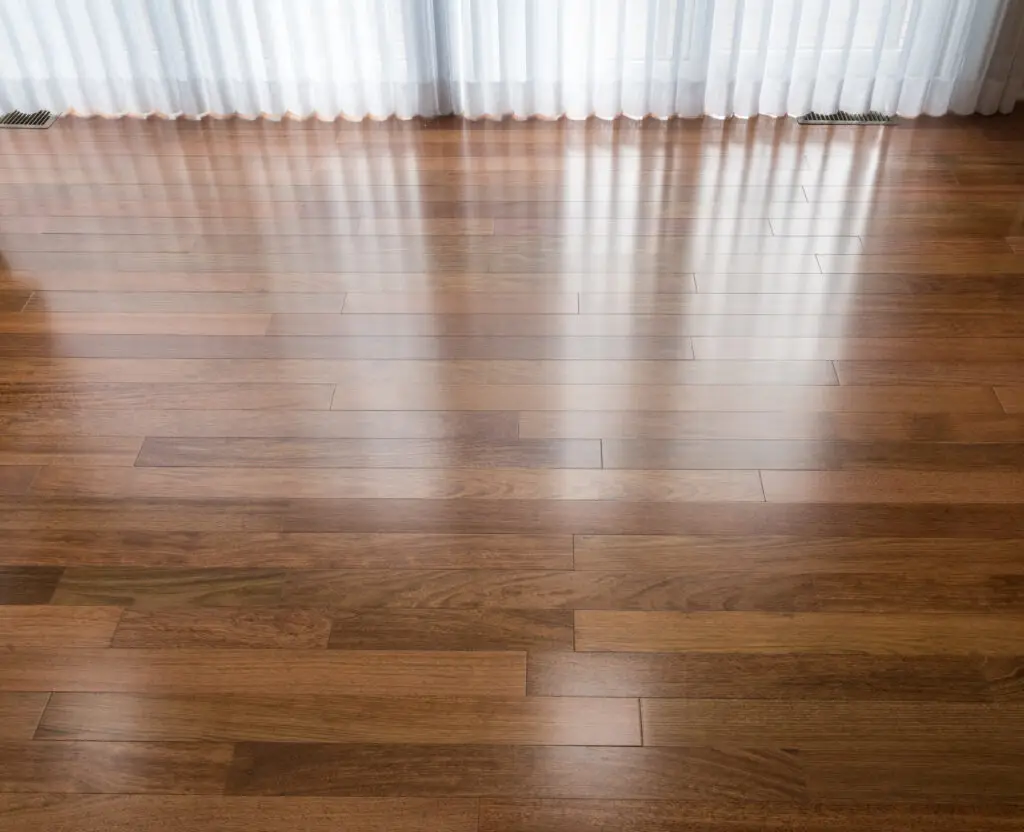The finish on your hardwood floor is its primary protector, shielding the wood from daily wear and tear, spills, and UV damage. While aesthetic appeal is crucial, durability is paramount, especially in high-traffic areas or homes with active lifestyles. Choosing a robust finish can significantly extend the life and beauty of your hardwood floors, reducing the need for frequent maintenance or costly refinishing. This guide will explore what makes a floor finish durable, highlight the top options available, and provide best practices for extending your floor’s life.

What makes a floor finish durable?
The durability of a floor finish is determined by several key factors that contribute to its resistance against scratches, abrasion, moisture, and chemical damage:
- Hardness (Abrasion Resistance): This refers to the finish’s ability to resist scratches and scuffs from foot traffic, furniture movement, and grit. Finishes with higher scratch resistance contain tougher resins or additives.
- Flexibility: A durable finish needs to be somewhat flexible to move with the natural expansion and contraction of the wood due to changes in humidity. A finish that is too rigid can crack or delaminate over time.
- Adhesion: The finish must bond strongly to the wood surface to prevent peeling or flaking, ensuring it acts as a cohesive protective layer.
- Chemical Resistance: The ability of the finish to resist damage from spills of household chemicals, cleaning agents, and other liquids.
- UV Resistance: For floors exposed to sunlight, UV resistance helps prevent yellowing, fading, or degradation of the finish over time.
- Number of Coats: Generally, more coats of a quality finish provide a thicker, more protective layer, increasing overall durability.
- Application Method: Proper application (clean surface, correct temperature, even spreading) ensures the finish performs as intended.
Top durable finish types for hardwood floors
Several types of finishes offer excellent durability, each with its own characteristics, benefits, and considerations.
Oil-based polyurethane
Oil-based polyurethane has long been a traditional favorite for its exceptional durability and warm, ambering effect on wood.
- Composition: Made from synthetic resins (typically urethanes) dissolved in mineral spirits or other solvents.
- Durability: Very high. It forms a hard, protective layer that is highly resistant to scratches, abrasion, and moisture. It is known for its long-lasting performance in high-traffic areas.
- Appearance: Imparts a rich, warm, amber hue to the wood, which deepens over time. Available in various sheens, from satin to high-gloss.
- Application: Can have a strong odor during application and drying. Requires longer drying times between coats (typically 8-24 hours). Usually, 2-3 coats are applied.
- Maintenance & Repair: Easy to clean. Minor scratches can be buffed out, but spot repairs are challenging to blend. A full re-coat is often needed for significant wear.
- Best For: High-traffic residential areas, commercial spaces, and anyone seeking a very robust and warm-toned finish.
Water-based polyurethane
Water-based polyurethane has gained immense popularity as a greener and faster-drying alternative to oil-based options, without significantly compromising on durability.
- Composition: Made from acrylic resins, often blended with urethanes, dissolved in water. Some advanced formulations include aluminum oxide for enhanced durability.
- Durability: High. Modern water-based polyurethanes, especially those with two-component (catalyst added) or aluminum oxide formulations, offer excellent resistance to scratches and abrasion, comparable to or even exceeding oil-based finishes.
- Appearance: Dries clear and typically maintains the natural color of the wood, with minimal yellowing over time. Available in a wide range of sheens, including matte, satin, and semi-gloss.
- Application: Low odor and fast-drying (2-4 hours between coats), allowing for multiple coats in a single day. This reduces project time significantly. Typically, 3-4 coats are recommended for optimal durability.
- Maintenance & Repair: Easy to clean. Easier to do spot repairs or screen and re-coat than oil-based poly if necessary.
- Best For: Environmentally conscious homeowners, those needing quicker project completion, light-colored wood species, and high-traffic areas where strong durability is required.
Hardwax oil
Hardwax oil finishes offer a unique blend of natural aesthetics and reparability, providing deep penetration and surface protection.
- Composition: A blend of natural oils (like linseed, sunflower, or soybean oil) and waxes (like carnauba or beeswax).
- Durability: Medium to high. It penetrates the wood to protect from within, while the wax component forms a breathable, protective layer on the surface. It’s highly resistant to water and common spills once cured. While it may show minor scuffs, these often blend into the natural look.
- Appearance: Enhances the natural color and grain of the wood, providing a very natural, matte, or low-sheen finish. It offers a tactile, almost raw wood feel.
- Application: Low VOCs and typically easier for DIY application. Requires 2-3 thin coats, with drying times ranging from a few hours to overnight.
- Maintenance & Repair: Very easy to maintain with specialized cleaning products. Crucially, spot repairs are seamless, as new oil can be applied directly to worn or damaged areas without needing to refinish the entire floor.
- Best For: Homeowners desiring a natural, matte look, those who value easy spot repair, and sustainable living choices. Ideal for both residential and commercial settings where a natural aesthetic is preferred.
Aluminum oxide finish
Aluminum oxide is not a finish type itself, but rather a ceramic additive integrated into polyurethane (most commonly water-based) finishes to drastically enhance their abrasion resistance.
- Composition: Microscopic ceramic particles (aluminum oxide) are factory-applied as a topcoat layer, often incorporated into several layers of a polyurethane finish.
- Durability: Extremely high. It is one of the most durable finishes available, offering exceptional resistance to scratches, scuffs, and heavy foot traffic. It’s often found on prefinished engineered and solid hardwood flooring.
- Appearance: Depends on the underlying polyurethane, but generally offers a clear, very hard surface. Available in various sheens.
- Application: Primarily a factory-applied finish, meaning it’s rarely applied on-site by contractors. You buy prefinished flooring with this coating.
- Maintenance & Repair: Very low maintenance. However, due to its extreme hardness, refinishing an aluminum oxide floor is much more challenging and often requires professional sanding equipment. Spot repairs are generally not possible; the entire floor typically needs to be sanded and refinished if heavily damaged.
- Best For: Extremely high-traffic residential or commercial areas where maximum durability is the absolute priority and periodic full refinishing is anticipated.
Best practices to extend floor life
Regardless of the durable finish you choose, proper care and maintenance are essential to maximize its lifespan and keep your floors looking beautiful:
- Regular Cleaning:
- Dust Mopping/Vacuuming: Regularly use a microfiber dust mop or a vacuum with a soft brush attachment to remove grit, dirt, and debris that can scratch the finish.
- Damp Cleaning: Use a pH-neutral hardwood floor cleaner with a slightly damp (not wet) mop. Avoid excessive water, steam cleaners, harsh chemicals, oil soaps, or abrasive cleaners.
- Protect from Scratches:
- Felt Pads: Place felt protectors under all furniture legs and replace them periodically as they wear down.
- Area Rugs and Mats: Use area rugs in high-traffic pathways, under dining tables, and at all entryways to trap dirt and provide extra protection.
- “No Shoes Inside” Policy: Encourage removing outdoor shoes to prevent tracking in grit and pebbles that can scratch the finish. Avoid high heels on wood floors.
- Control Humidity: Maintain indoor humidity levels between and 55% using humidifiers or dehumidifiers as needed. Extreme fluctuations can cause wood to expand, contract, or crack, which can damage the finish.
- Clean Spills Immediately: Wipe up any spills as soon as they occur to prevent moisture damage or staining.
- Lift, Don’t Drag: When moving furniture or heavy objects, always lift them rather than dragging them across the floor. Use furniture glides for heavier items.
- Avoid Direct Sunlight: Prolonged exposure to direct sunlight can cause some finishes to yellow or the wood to fade. Use curtains, blinds, or UV-blocking window films to mitigate this.
By selecting a high-quality, durable finish and implementing these best practices, your hardwood floors will remain a stunning and resilient feature of your home for many years.
